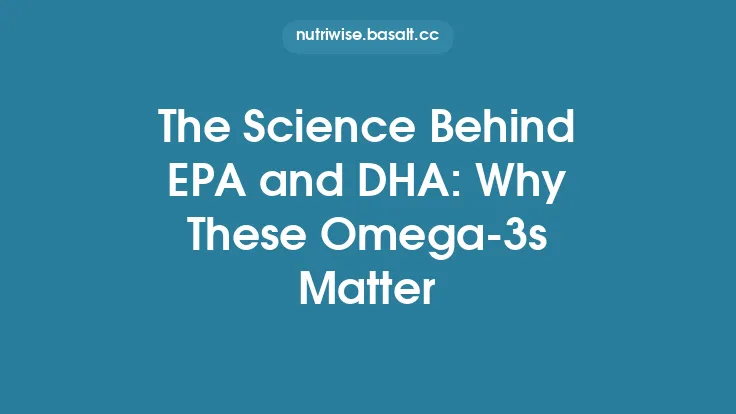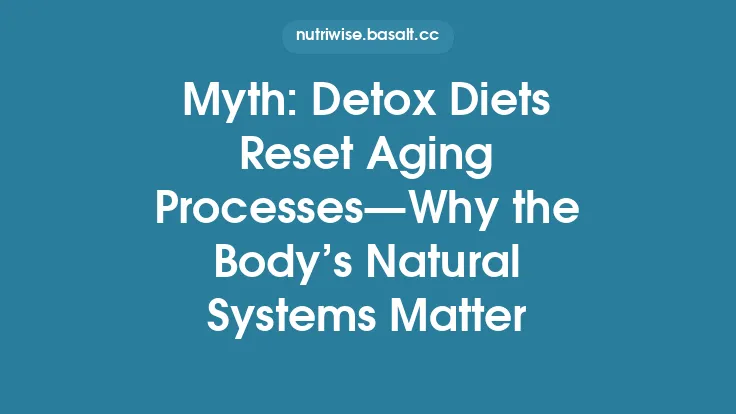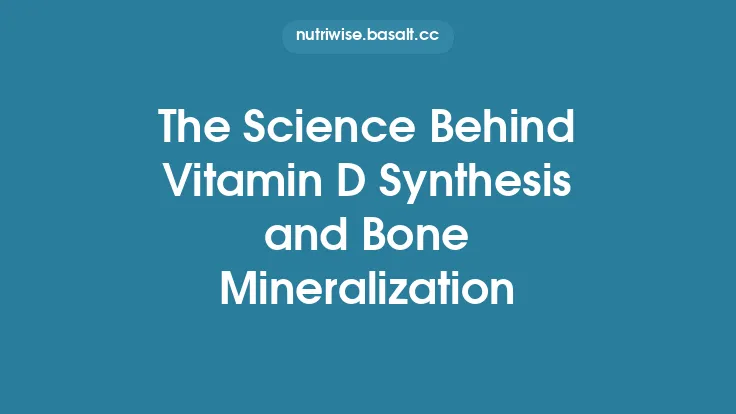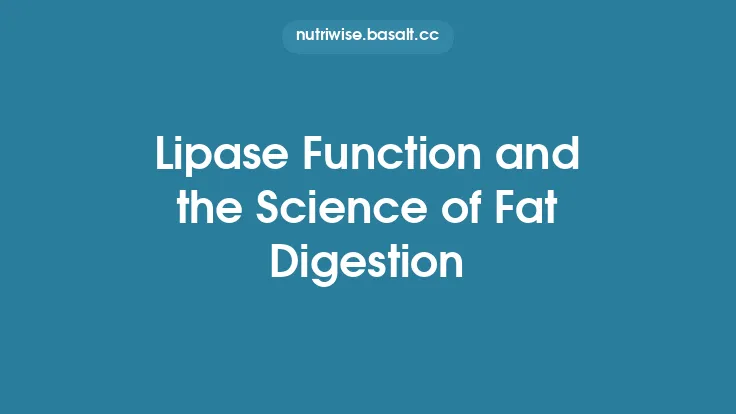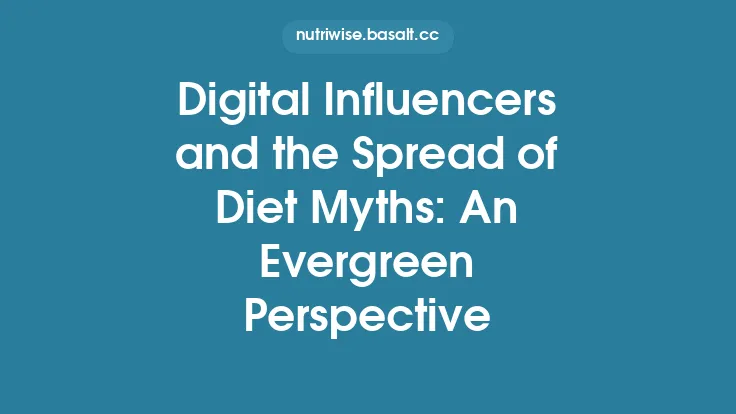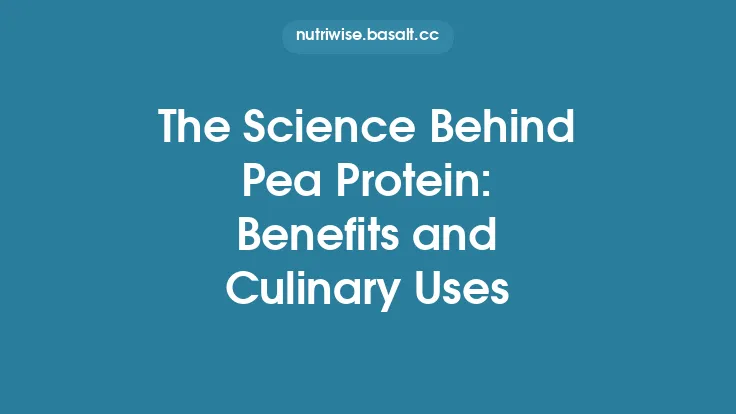The idea of a “detox diet” is alluring: a short‑term plan that promises to flush out hidden poisons, reset the body, and leave you feeling lighter and healthier. Yet, despite the flood of books, blogs, and social‑media posts touting various juice fasts, herb‑infused cleanses, or extreme restriction regimens, the scientific record shows that most of these programs fail to deliver on their promises. The primary reason lies in a misunderstanding of how the liver and kidneys—the body’s true detox powerhouses—actually work. When a diet is designed without respecting the physiology of these organs, it can not only be ineffective but may also pose real health risks.
Below, we unpack the science behind liver and kidney function, examine why many detox diets clash with this biology, and outline evidence‑based strategies that genuinely support the body’s natural cleansing capacity.
The Body’s Built‑In Detox Machinery: Liver and Kidney Overview
Liver:
- Central hub of metabolism: The liver processes nutrients, synthesizes proteins, stores glycogen, and, crucially, transforms endogenous and exogenous chemicals into water‑soluble forms that can be eliminated.
- Two‑phase detox system: Phase I (oxidation, reduction, hydrolysis) introduces reactive groups, while Phase II (conjugation) attaches molecules such as glutathione, sulfate, or glucuronic acid, rendering the compounds harmless.
- Regeneration capacity: Hepatocytes can proliferate after injury, but this ability is finite and depends on adequate nutrition and the absence of chronic insults (e.g., alcohol, certain drugs).
Kidneys:
- Filtration engine: Each kidney contains roughly one million nephrons, each acting as a miniature filtration unit. Blood is filtered at the glomerulus, and the filtrate is then modified through tubular reabsorption and secretion.
- Selective excretion: The kidneys conserve essential electrolytes and nutrients while excreting waste products (urea, creatinine, drug metabolites) and excess water.
- Acid‑base balance: By adjusting the excretion of hydrogen ions and bicarbonate, the kidneys maintain the narrow pH range required for cellular function.
Both organs operate continuously, 24 hours a day, and are highly efficient at handling the normal load of dietary and environmental chemicals encountered by a healthy adult.
How Detox Diets Claim to “Support” These Organs
Detox programs typically make three overlapping claims:
- “Flush out toxins” – suggesting that a short‑term regimen can accelerate the removal of harmful substances.
- “Give the liver/kidneys a break” – implying that restricting certain foods reduces the workload of these organs.
- “Boost detox enzymes” – asserting that specific foods or herbs up‑regulate Phase I/II enzymes or renal clearance.
While the intention is to aid the liver and kidneys, the mechanisms proposed are rarely grounded in human physiology. For example, a diet that eliminates all protein for a week does not “rest” the liver; instead, it deprives hepatocytes of essential amino acids needed to synthesize glutathione, a key Phase II cofactor. Similarly, a juice‑only cleanse may flood the kidneys with fructose‑derived metabolites, increasing the risk of uric acid formation and renal stone formation.
The Biochemistry of Phase I and Phase II Liver Metabolism
Phase I (Functionalization):
- Enzymes such as cytochrome P450 oxidases introduce polar groups (e.g., –OH) into lipophilic compounds.
- This step can generate reactive intermediates that, if not promptly conjugated, may bind to cellular macromolecules and cause oxidative stress.
Phase II (Conjugation):
- Conjugating agents—glutathione, sulfate, glucuronic acid—attach to the functionalized molecules, dramatically increasing water solubility.
- The availability of these agents hinges on dietary intake of sulfur‑containing amino acids (cysteine, methionine) and vitamins (B6, B12, folate) that serve as cofactors.
A detox diet that severely restricts protein or certain B‑vitamins can therefore impair Phase II capacity, paradoxically *reducing* the liver’s ability to neutralize toxins rather than enhancing it.
Renal Filtration, Secretion, and Reabsorption: Why the Kidneys Aren’t “Overloaded” by Diets
The kidneys’ primary job is to maintain homeostasis, not to “filter out” excess dietary components beyond what the body naturally produces. Key points:
- Glomerular filtration rate (GFR) is relatively constant, adjusting only in response to hemodynamic changes, not short‑term dietary shifts.
- Tubular secretion actively transports organic anions and cations (e.g., drug metabolites) into the urine; this process is saturable but generally has ample capacity for normal dietary loads.
- Reabsorption conserves glucose, amino acids, and electrolytes; a sudden lack of these substrates (as seen in extreme low‑calorie cleanses) can trigger maladaptive responses, such as increased catabolism of muscle protein, raising nitrogenous waste that the kidneys must excrete.
Thus, a diet that eliminates whole food groups does not “lighten” the kidneys; it can create an imbalance that forces the kidneys to work harder to maintain electrolyte and acid‑base equilibrium.
Common Detox Diet Strategies and Their Physiological Mismatch
| Detox Approach | Core Claim | Why It Misaligns with Liver/Kidney Physiology |
|---|---|---|
| All‑fruit or juice cleanse | “High antioxidant load cleanses the body” | Excess fructose raises hepatic de novo lipogenesis, increasing triglyceride synthesis and potentially stressing the liver. The kidneys must excrete large volumes of dilute urine, risking electrolyte loss. |
| Protein‑free week | “Less nitrogenous waste for the kidneys” | Protein restriction depletes amino acids needed for glutathione synthesis, impairing Phase II detox. The body compensates by breaking down muscle, increasing urea production later. |
| Herbal “liver‑flush” (e.g., milk thistle, dandelion) | “Stimulates bile flow and detox enzymes” | While some herbs have modest enzyme‑inducing effects, the magnitude is insufficient to overcome a diet lacking essential cofactors. Overuse can cause herb‑drug interactions, altering cytochrome P450 activity unpredictably. |
| Extreme calorie restriction (<500 kcal/day) | “Gives organs a rest” | Severe caloric deficit triggers gluconeogenesis, raising ammonia production that the liver must convert to urea. The kidneys then excrete more urea, increasing renal workload. |
| “Detox” water with added electrolytes | “Flushes toxins via increased urine output” | Diuresis can lead to hyponatremia or hypokalemia, impairing renal tubular function and potentially causing acute kidney injury if fluid balance is not carefully managed. |
In each case, the diet’s premise ignores the integrated nature of metabolism: the liver and kidneys rely on a steady supply of nutrients, cofactors, and balanced electrolytes to perform their detox functions efficiently.
Caloric Restriction, Macronutrient Imbalance, and Metabolic Consequences
Short‑term caloric restriction does reduce overall metabolic rate, but it also triggers a cascade of hormonal changes:
- Insulin drops, prompting lipolysis and free fatty acid (FFA) release. The liver uptakes FFAs, converting them to ketone bodies. While ketogenesis is a normal adaptive response, excessive ketone production can overwhelm hepatic mitochondrial capacity, leading to transient hepatic steatosis.
- Glucagon rises, stimulating gluconeogenesis. This process consumes amino acids, increasing nitrogenous waste that must be cleared by the kidneys.
- Cortisol elevation can impair immune function and promote protein catabolism, further burdening the liver’s urea cycle.
When a detox diet couples severe calorie restriction with macronutrient exclusion (e.g., no fats or proteins), the body’s compensatory mechanisms become overtaxed, and the intended “rest” for detox organs turns into metabolic stress.
Micronutrient Deficiencies and Enzyme Cofactor Limitations
Detox pathways are heavily dependent on micronutrients:
- Vitamin B6 (pyridoxal‑5‑phosphate) is a cofactor for transaminases in the urea cycle and for sulfation reactions in Phase II.
- Vitamin C and E protect hepatocytes from oxidative stress generated during Phase I reactions.
- Zinc and magnesium are essential for numerous renal transport proteins.
Detox regimens that restrict fruits, vegetables, whole grains, or animal products can quickly deplete these nutrients, diminishing the liver’s capacity to conjugate toxins and the kidneys’ ability to reabsorb electrolytes. The resulting oxidative stress can manifest as transient elevations in liver enzymes (ALT, AST) and, in severe cases, acute kidney injury.
Potential Risks: Electrolyte Disturbances, Hepatotoxicity, and Kidney Strain
- Electrolyte Imbalance – High‑water intake without adequate sodium, potassium, or magnesium can cause hyponatremia, hypokalemia, or hypomagnesemia. Symptoms range from fatigue and muscle cramps to cardiac arrhythmias.
- Hepatotoxicity – Certain “detox” herbs (e.g., kava, comfrey) contain pyrrolizidine alkaloids that can cause liver injury, especially when taken in concentrated forms. Even benign‑looking herbs can interact with prescription medications, leading to unexpected liver enzyme spikes.
- Renal Strain – Excessive protein catabolism (from muscle breakdown) raises blood urea nitrogen (BUN). In individuals with pre‑existing kidney disease, this can precipitate acute kidney injury. Additionally, high oxalate loads from certain fruit‑only cleanses may promote calcium oxalate crystal formation.
These risks underscore why a short‑term “detox” can be more harmful than beneficial, particularly for vulnerable populations (e.g., older adults, those with chronic liver or kidney disease, pregnant individuals).
Evidence from Clinical Trials on Detox Diets
- Randomized Controlled Trials (RCTs) comparing juice cleanses to isocaloric balanced diets consistently show no superior improvement in liver function tests, renal biomarkers, or markers of oxidative stress.
- Meta‑analyses of short‑term fasting or very‑low‑calorie diets reveal modest weight loss but also temporary reductions in lean body mass, indicating muscle protein breakdown—a process that increases nitrogenous waste for renal excretion.
- Observational studies linking extreme detox practices to cases of acute hepatitis or acute tubular necrosis are limited but highlight real‑world adverse events that are not captured in short‑duration RCTs.
Overall, the scientific literature does not support the claim that detox diets enhance the liver’s or kidneys’ ability to eliminate toxins beyond what the body already accomplishes under normal, nutritionally adequate conditions.
What Science Suggests: Sustainable Approaches to Support Liver and Kidney Health
Rather than short‑term “detox” protocols, the evidence favors consistent, balanced nutrition and lifestyle habits:
- Adequate Protein Intake – 0.8–1.2 g/kg body weight per day supplies amino acids for glutathione synthesis and urea cycle function.
- Diverse Micronutrient Sources – A varied diet ensures sufficient B‑vitamins, vitamin C, zinc, and magnesium, all of which act as cofactors for detox enzymes.
- Moderate Alcohol Consumption – Limiting alcohol reduces hepatic oxidative burden and preserves mitochondrial function.
- Regular Physical Activity – Exercise improves hepatic blood flow, enhances insulin sensitivity, and promotes renal perfusion, all of which support efficient metabolism and excretion.
- Hydration Within Reason – Maintaining plasma volume helps the kidneys filter blood effectively, but excessive fluid intake without electrolytes can be counterproductive.
- Avoidance of Known Hepatotoxins – This includes certain herbal supplements, high‑dose vitamin A, and illicit substances.
These strategies align with the body’s natural detox pathways, allowing the liver and kidneys to operate at optimal capacity without the stress of extreme dietary manipulation.
Practical Take‑aways for Readers
- Don’t rely on short‑term cleanses to “reset” your body. The liver and kidneys are already equipped to handle everyday toxin loads when supplied with the nutrients they need.
- Focus on nutrient density: Include lean proteins, whole grains, a rainbow of vegetables, and healthy fats daily. This provides the building blocks for glutathione, sulfation, and other Phase II pathways.
- Watch for red flags: Persistent fatigue, dark urine, jaundice, swelling, or unexplained changes in blood pressure after a detox regimen may signal liver or kidney stress—seek medical evaluation promptly.
- Consult professionals before embarking on any extreme diet, especially if you have pre‑existing health conditions or take prescription medications.
- Adopt a long‑term mindset: Small, sustainable changes (e.g., cooking with less oil, limiting processed foods, staying active) have a far greater impact on organ health than any 3‑day juice fast.
By respecting the sophisticated biochemistry of the liver and kidneys and providing them with the nutrients they require, you can support the body’s innate detoxification processes without resorting to fad diets that promise quick fixes but often deliver disappointment—and sometimes harm.
